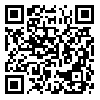BibTeX | RIS | EndNote | Medlars | ProCite | Reference Manager | RefWorks
Send citation to:
URL: http://journal.rums.ac.ir/article-1-120-en.html
Comparison of Topical EMLA Cream with Oral Glucose on Pain Reduction at Venipuncture in Ichteric Newborns
M. Noori Shadkam MD-MPH [1] , M. Behjati MD [2] , H. Fallahzadeh PhD [3]
�
Bacground and Objective: A number of studies have shown that orally administered sweet-tasting solutions reduce signs of pain during painful procedures. The topical anesthetic cream EMLA has recently been shown to be safe for use in neonates. This study compared the pain-reducing effect of EMLA cream with that of orally administered glucose during venipuncture in newborns.
Materials and Methods: A randomized controlled, double-blind study including 220 newborns undergoing venipuncture for clinical purposes was performed. One hundered and six newborns received EMLA on the skin and orally administered placebo (sterilized) and 114 received glucos- 30% orally and placebo (Vit A+D) on the skin. Symptoms associated with pain at venipuncture were measured with the Neonatal/ Infant Pain Scale (NIPS). Crying time was recorded.
Results: The results showed that the NIPS scores were significantly lower in the glucose group (mean: 1.89) compared to the EMLA group (mean: 2.81). The duration of crying in the first 2 minutes was significantly lower in the glucose group (median=2 seconds) than in the EMLA group (median=9 seconds). There were significantly fewer patients in the glucose group who were scored having pain (defind as NIPS scores above 3), 12.3% compared with 29.2% in the EMLA group.
Conclusions: We found that glucose is effective in reducing symptoms associated with pain from venipuncture in newborns. Our results showed that glucose is more effective than the local anesthetic cream EMLA.
�
Key words: EMLA cream, Oral glucose, Venipuncture, Pain, Neonate1-Assistant Professor of Social Health Medicine, Universityof Medical Sciences, Yazd.
�(Corresponding author) Tel: (0351)8224000, Fax: (0351) 8224100, E.mail: mahmood_7072005@ yahoo.com
2-Assistant Professor of Pediatric Disease, University of Medical Sciences, Yazd
3-Assistant Professor of Epidemiology, University of Medical Sciences, Yazd
| Rights and permissions | |
 |
This work is licensed under a Creative Commons Attribution-NonCommercial 4.0 International License. |






